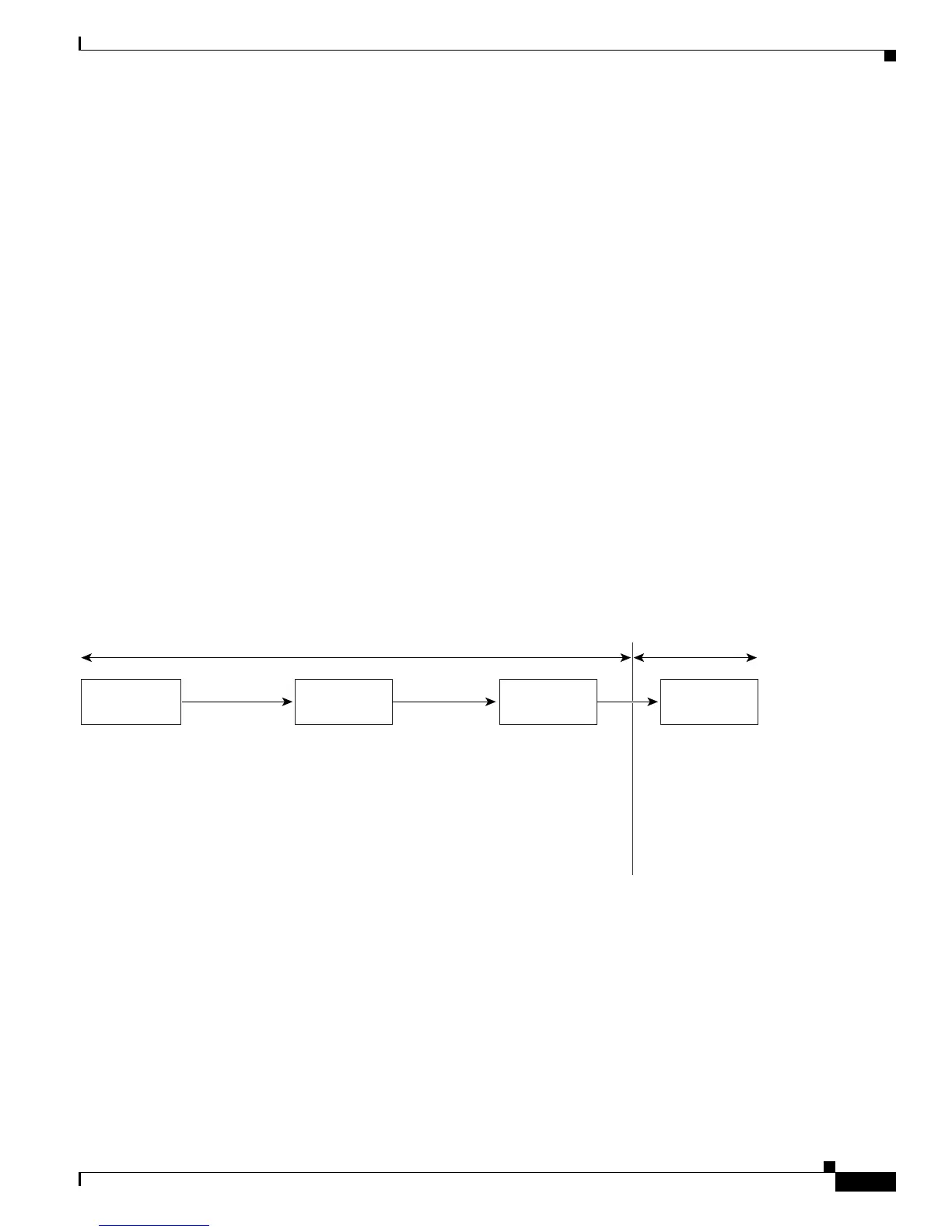29-5
Software Configuration Guide—Release 12.2(25)EW
OL-6696-01
Chapter 29 Configuring QoS
Overview of QoS
Basic QoS Model
Figure 29-2 shows the basic QoS model. Actions at the ingress and egress interfaces include classifying
traffic, policing, and marking:
• Classifying distinguishes one kind of traffic from another. The process generates an internal DSCP
for a packet, which identifies all the future QoS actions to be performed on this packet. For more
information, see the “Classification” section on page 29-5.
• Policing determines whether a packet is in or out of profile by comparing the traffic rate to the
configured policer, which limits the bandwidth consumed by a flow of traffic. The result of this
determination is passed to the marker. For more information, see the “Policing and Marking” section
on page 29-9.
• Marking evaluates the policer configuration information regarding the action to be taken when a
packet is out of profile and decides what to do with the packet (pass through a packet without
modification, mark down the DSCP value in the packet, or drop the packet). For more information,
see the “Policing and Marking” section on page 29-9.
Actions at the egress interface include queueing and scheduling:
• Queueing evaluates the internal DSCP and determines which of the four egress queues in which to
place the packet.
• Scheduling services the four egress (transmit) queues based on the sharing and shaping
configuration of the egress (transmit) port. Sharing and shaping configurations are described in the
“Queueing and Scheduling” section on page 29-13.
Figure 29-2 Basic QoS Model
Classification
Classification is the process of distinguishing one kind of traffic from another by examining the fields
in the packet. Classification is enabled only if QoS is globally enabled on the switch. By default, QoS is
globally disabled, so no classification occurs.
You specify which fields in the frame or packet that you want to use to classify incoming traffic.
Classification options are shown in Figure 29-3.
68141
Classification Policing
Generate DSCP
Actions at ingress and egress Actions at egress
Mark
In profile or
out of profile
Inspect packet and
determine the DSCP
based on ACLs or
the configuration.
Map the Layer 2
CoS value to a
DSCP value.
Compare traffic rate to
the configured policer
and determine if the
packet is in profile or
out of profile.
Based on whether the
packet is in or out of
profile and the configured
parameters, determine
whether to pass through,
mark down, or drop the
packet. The DSCP and
CoS are marked or
changed accordingly.
Queueing and
scheduling
Based on the marked
DSCP, determine into
which of the egress
queues to place the
packet. Then service
the queues according
to the configured
weights.

